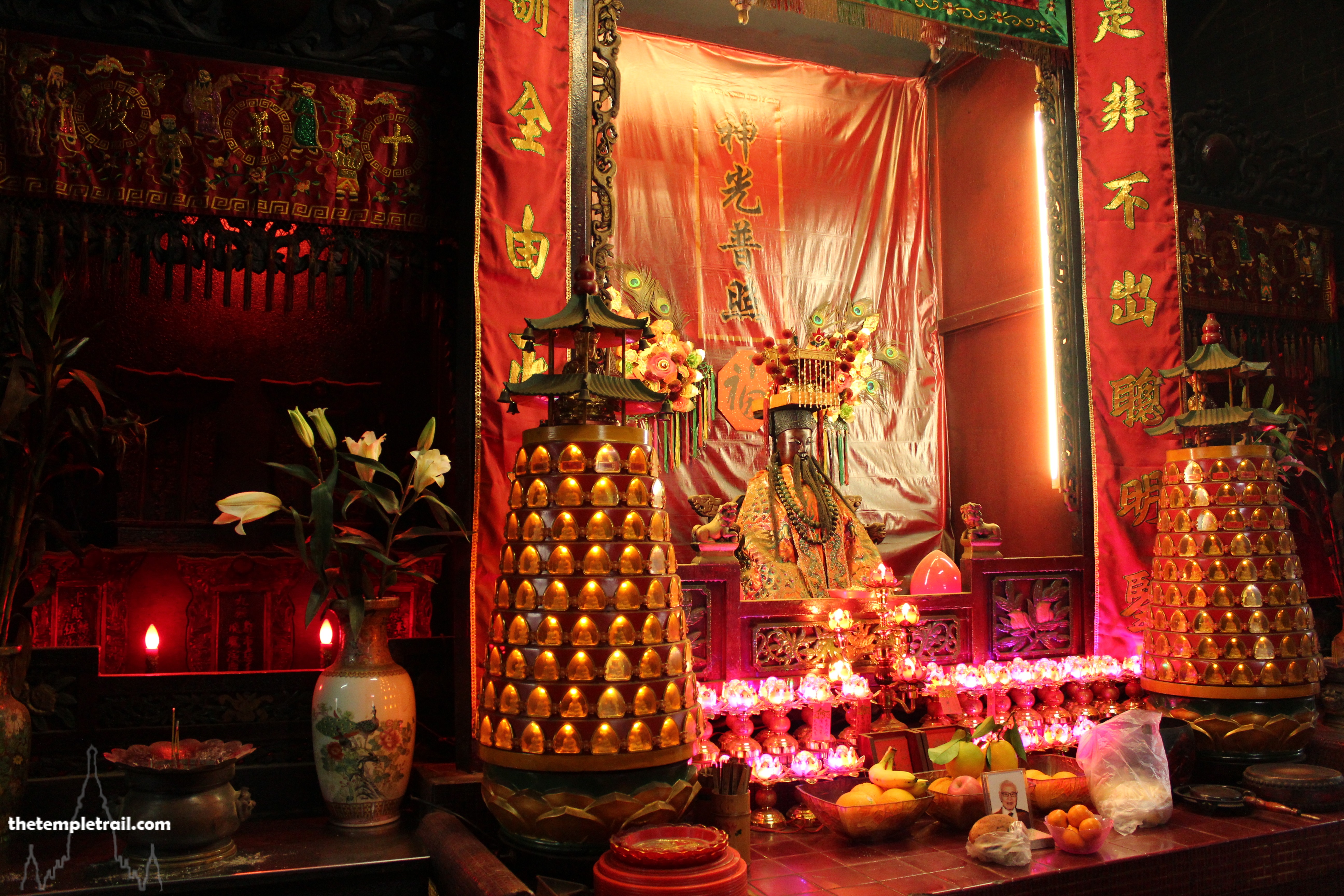The motorbikes whizz past as you step out onto the busy street in the middle of the Vietnamese capital. The old wisdom of looking and waiting before crossing a road does not apply here in Hanoi and you have adapted to the best local method of getting across to the other side. The secret is to just go. If you hesitate, you are finished. Wave after wave of motorbikes scoot around you. By keeping a slow, but steady pace without looking or flinching, you safely make it to the other side. In Vietnam, the rules are different, especially in the northern centre of power, Hanoi. The city is a mix of modern concrete, crumbling French colonial buildings and some ancient temples that have withstood multiple wars and changes of regime. Having crossed the road, you find yourself on an island of green nestled between four roads. This is one of the ancient bastions of Vietnamese heritage, albeit one influenced by Imperial China. By a gateway into a compound you stand by a stone that instructs those on horseback to dismount out of respect. This is a sure sign that you are at a Confucian temple. The complex that lies before you is Văn Miếu – Quốc Tử Giám, commonly called, the Temple of Literature.
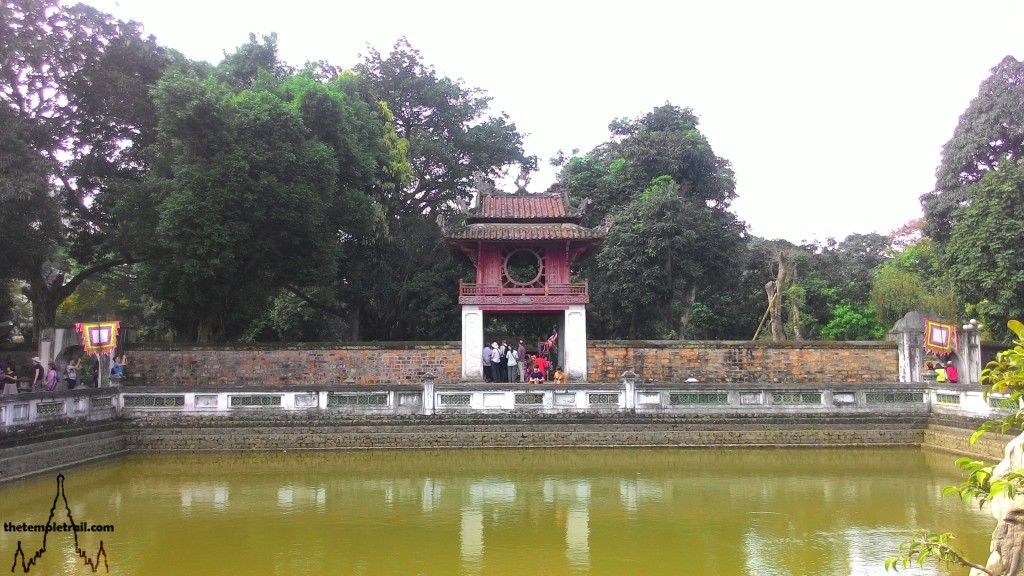
Văn Miếu is the Temple of Literature, but Quốc Tử Giám is the Imperial Academy. Dedicated to Khổng Tử (孔子 Kǒngzǐ – Confucius), the temple can trace its origins to 1070 CE, during the reign of King Lý Thánh Tông. Six years later, Quốc Tử Giám opened in order to provide quan (mandarins) for the imperial bureaucracy, as well as to provide education to the Vietnamese elite. The academy was active from 1076 until the Nguyễn dynasty moved the capital from Thăng Long (Hanoi) to Huế in 1802. The temple and academy underwent various renovations and regulation changes over the years, notably during the Trần dynasty (1225 – 1400) and the Lê dynasty (1428 – 1788). Declared a Monument Historique in 1906 by the French administration and restored by the École française d’Extrême-Orient in 1920, the academy was destroyed by French cannons during the First Indochina War in 1947.
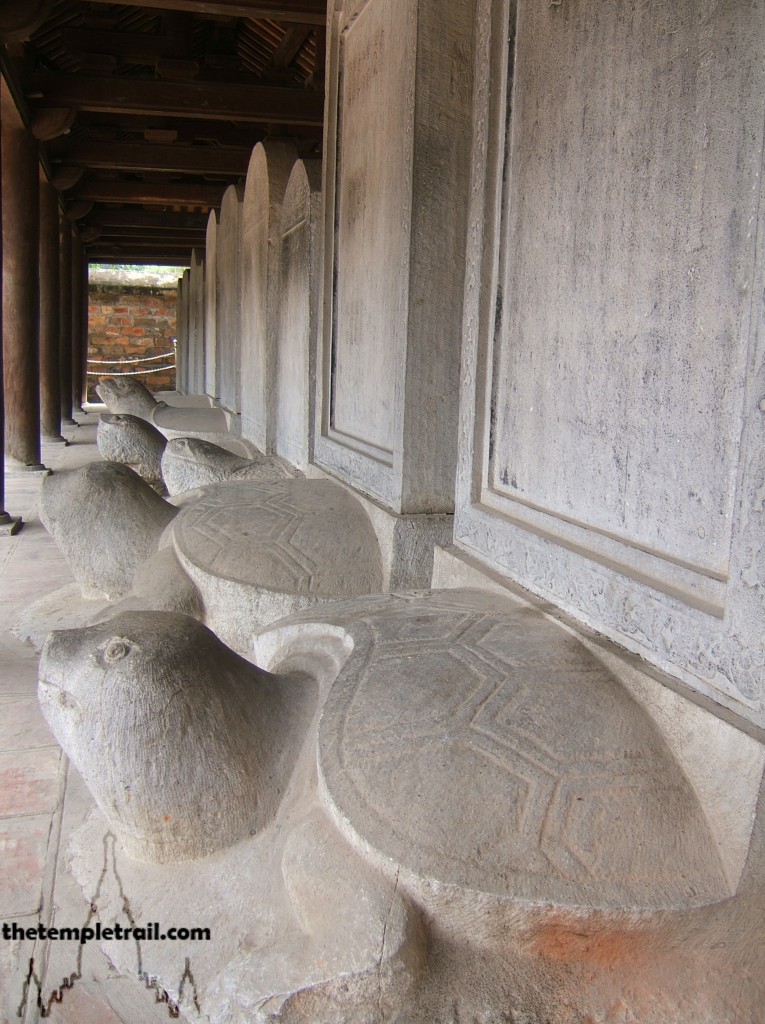
The Temple complex shows the heavy influence of China who dominated and ruled Vietnam four times in its history. The majority of the period 111 BCE to 938 CE saw Vietnam under the yoke of China, leaving an indelible cultural mark on the country. By the time Lý Thánh Tông built the temple, Confucian ideology was already well established in Vietnam. The construction of a temple, emulating the one in Confucius’ hometown of Qūfù in Shandong, China was a sign that the Lý dynasty wanted to add legitimacy to their rule. China successfully exported Confucianism to other neighbouring countries, but it took a hold in Vietnam earlier than in Korea and Japan. The temple is the oldest Confucian temple outside of China, predating Munmyo in Seoul by more than 300 years. The proximity of the imperial academy to the temple is much like the Beijing Confucius Temple and Imperial Academy that is more than 200 years younger than Văn Miếu.
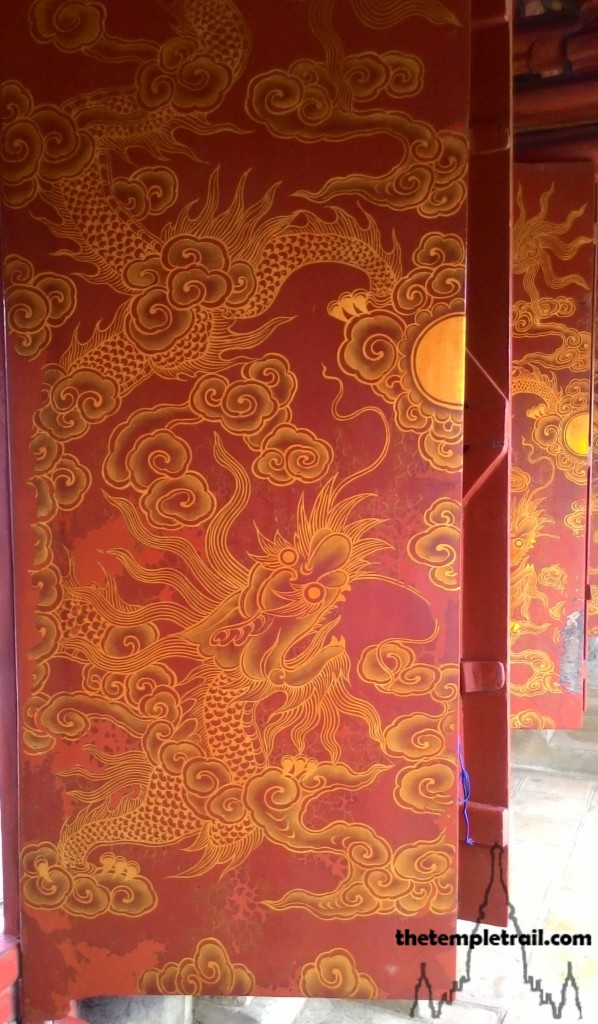
The temple follows a standard Confucian layout and on the opposite side of the street from where you now stand is the vestige of Văn Hồ (Literature Lake). This is the normal feature at the beginning of the south to north axis of a Confucius temple. The lake is somewhat rustic and not as well regimented as those at other temples. Where you stand now is next to four pillars marking the entrance to the main compound. The two central pillars rise higher than those on either side. These are the Vietnamese style version of the simple gates found in Chinese Confucian temples. In China, there are crossbeams connecting the columns, but here, the square pillars stand independent of each other.
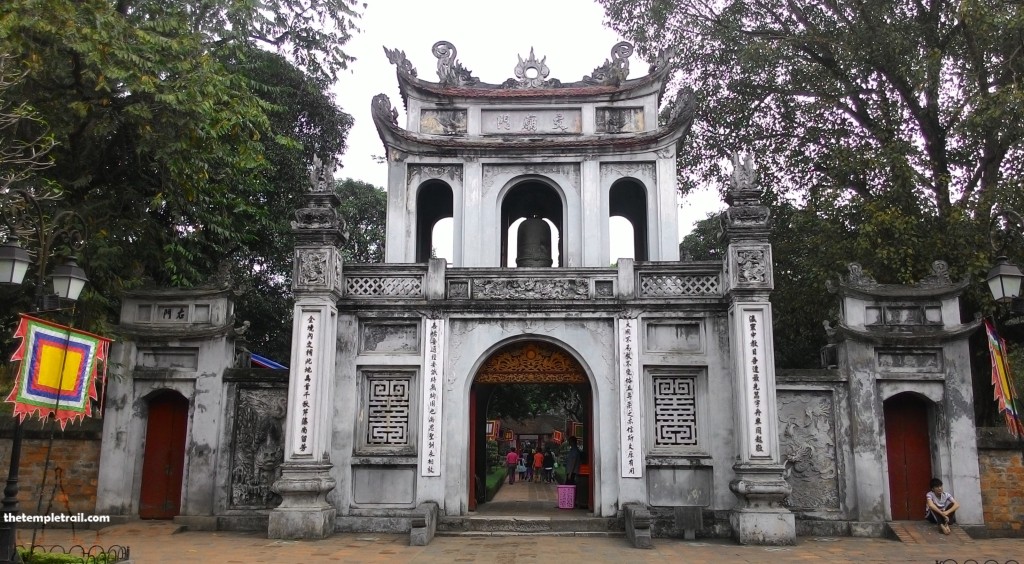
Passing through, you arrive at the first actual gateway of the precinct. The Văn Miếu Môn, known as the Great Portico in English, is the main temple gate. The current gate dates from 1888 in the reign of Emperor Khải Định of the Nguyễn dynasty. Built in a typical Vietnamese style, it is similar to entrance gates at Buddhist and folk religion temples. Reliefs of a tiger and a dragon flank the main doorway and the second level holds a bronze bell that used to be sounded when a notable person entered the temple. There were originally two stelae on the second level that have now disappeared. Passing through the gate, you enter into the first courtyard and note that three paths lie before you. The central path was used by the ruler and the bell in the gate signifies this. The two smaller doors of the Great Portico are the beginning of the other two paths. The path on the left was for civil mandarins, whereas the one on the right was for military administrators. This three path system is typical of Chinese Confucian temples, but normally the central path is to be used only by those who placed first in the Imperial Examinations (科舉 Kējǔ). In Vietnam, the examination system was similar and after passing various levels of local examination, a top candidate could sit the Thi Đình (Royal Court Examination).

While the two side paths lead to the Đạt Tài Môn (Attained Talent Gate) and Thành Đức Môn (Accomplished Virtue Gate), you follow the royal path to the Đại Trung Môn (Great Middle Gate). This simple gate is classically Vietnamese, with no doors and a completely open front and back supported by red wooden columns. It has a flush gable and fits with the staid atmosphere typical of a Confucian temple. Passing through, you see a structure that is quite the opposite style at the other end of the second courtyard. The three paths continue and the next two side gates are the Cửa Bi Văn (Magnificence of Letters Gate) and Cửa Súc Văn (Crystallization of Letters Gate). Maintaining your regal beeline, you head down the middle to the most iconic structure of the entire complex.
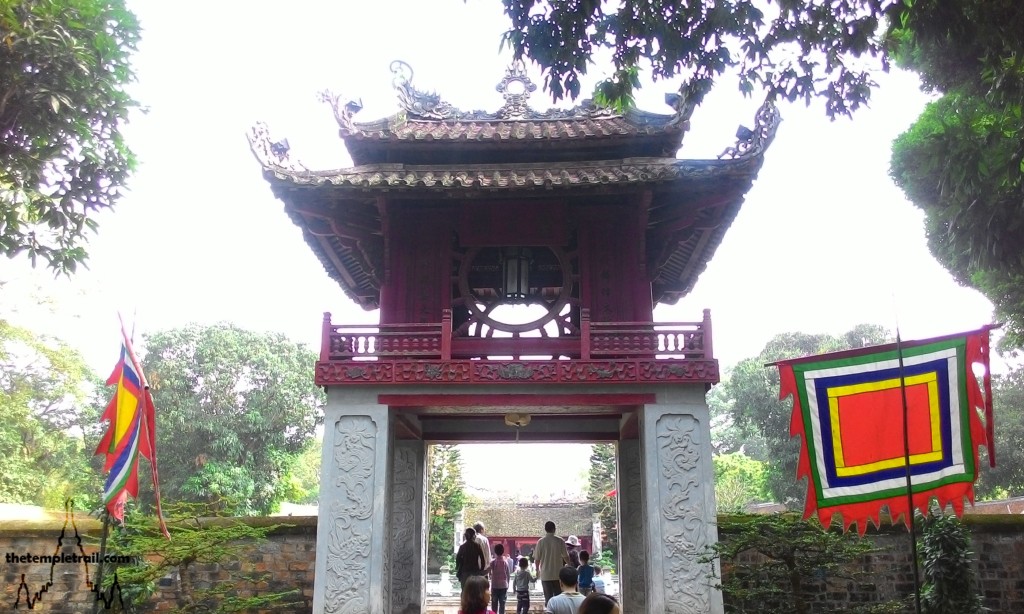
The Khuê Văn Các (Constellation of Literature Pavilion) is a unique structure that is instantly recognizable. Not a large structure, the pavilion, which acts as a gate, is a two storey structure built in 1805 during the reign of Gia Long, the first Nguyễn emperor shortly after he moved the capital from Hanoi to Huế. It was actually built by General Nguyễn Văn Thành, a controversial figure whose family fell out of favour with the emperor, leading to executions and Nguyễn Văn Thành’s suicide. Four square, whitewashed brick pillars support a red wooden pavilion with an elaborate terracotta tiled roof. A symbol of Hanoi, the most famous features of the building are the two circular windows that have spoke-like slats radiating from a central circle to the square frame. The design represents the Constellation of Literature and the light shining from it. The circle is also heaven to the square earth.
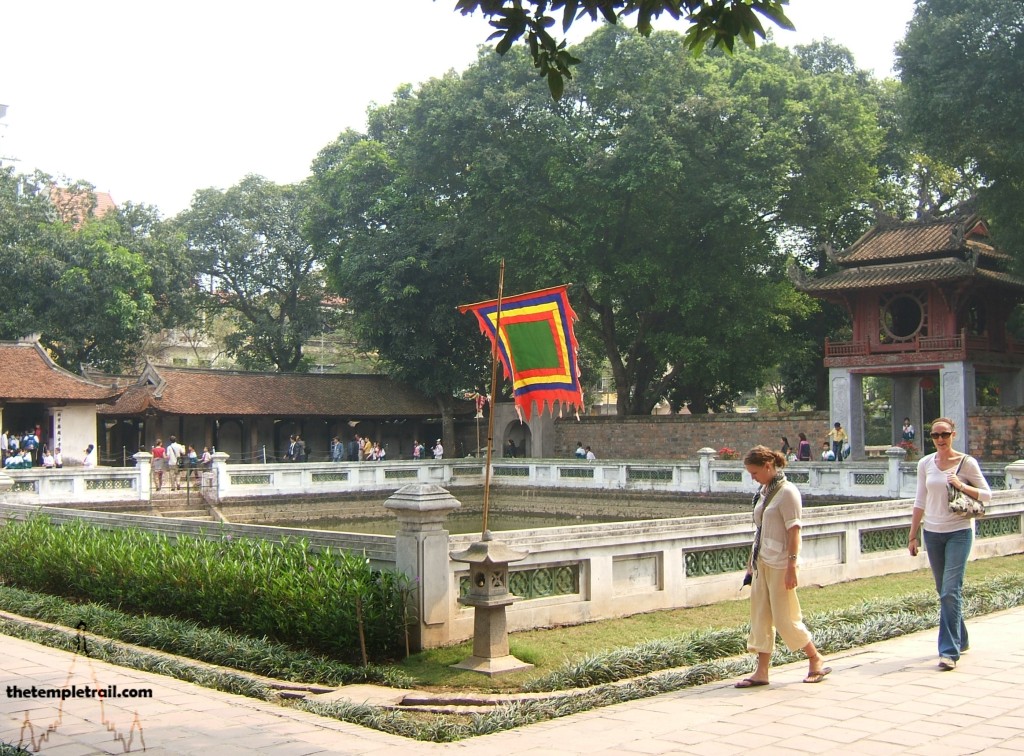
Exiting on the other side of the pavilion, you find yourself in a different space. The previous two courtyards have been green spaces with grass and shrubs, the third courtyard is centred around the Thiên Quang Tỉnh (Well of Heavenly Clarity). The murky green water of the pond fails to live up to its name, but the square pool fills the majority of the courtyard. In another play on heaven and earth, the circular design of the Khuê Văn Các and the square pond show the two converging on this place of excellence in learning. On both sides of the well are Stelae Pavilions. Restored at later points, they house the 82 remaining stelae of the 116 originals that were first erected by King Lê Thánh Tông in 1484 and added to until 1779. The stones display the names of those who passed the royal court examinations from 1442 onwards.
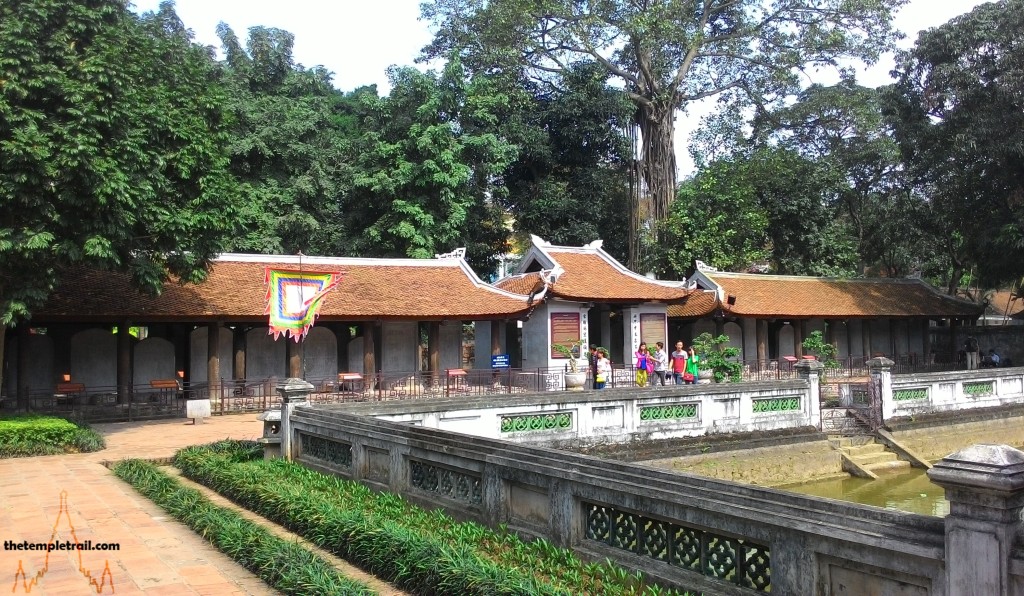
Walking among the stone rows, you see that each stele is placed on the back of a stone tortoise, representing longevity. The stones, known as bia tiến sĩ (doctorate stelae), were mostly blank when erected, but over the subsequent 550 years, the names of the successful were recorded for eternity. The highest level of scholar was a trạng nguyên, the first place scholar. Over the almost 1000 year history of the examinations, only 55 people attained the rank of trạng nguyên in the triennial court exams. The first was awarded to Lê Văn Thịnh in the 11th century. The system changed in the 1247 to allowing for three ranks, adding the new bảng nhãn (second place) and thám hoa (third place) titles. All other successful candidates were given the title of tiến sĩ. The system was finally abolished by the French in 1913, ending a millennium of Vietnamese educational heritage.
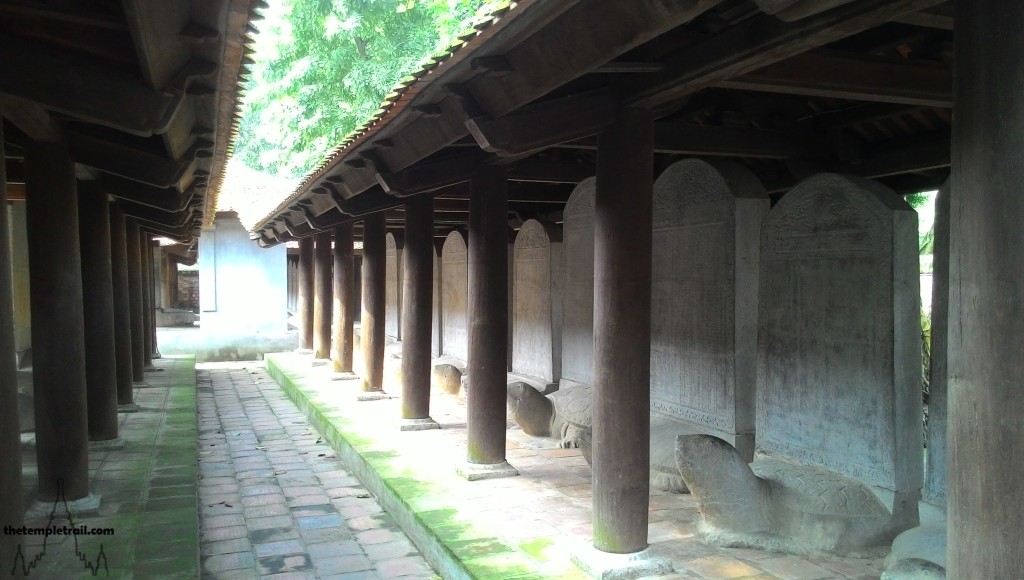
As you wander through the pavilions, you get a sense of the weight of history that is held by the bricks and mortar of the temple and university. Hundreds of young Vietnamese men who devoted their live to study and bureaucracy also trod where your feet now stand. Following their route, you approach the Đại Thành Môn (Gate of Great Synthesis). To the left and right of the gate are the Kim Thanh môn (Golden Sound Gate) and the Ngọc Chấn Môn (Jade Vibration Gate). Just like the Kǒng Miào (孔廟) in Qūfù and the Confucius Temple in Taipei, the golden sound is a reference to a bronze bell and the jade vibration to a stone chime used in classic Confucian ritual music. The famous Confucian scholar Mencius (孟子 Mèng Zǐ), known as Mạnh Tử in Vietnamese, said ‘start with the bell and end with the chime and the music will be perfect’. He was actually speaking about the necessity of clear and instructive teaching in a good lesson. The Đại Thành Môn was built during the reign of Lý Thánh Tông, making it one of the earliest structures of the temple and this is reflected in the simple style of the gate. On its other side, you reach the fourth courtyard of the temple.
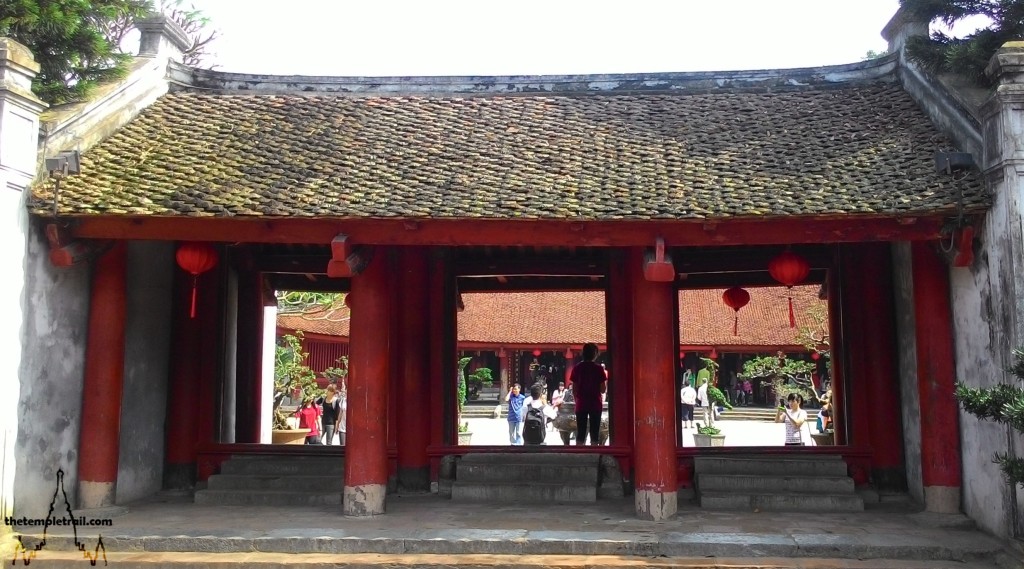
From the middle of the courtyard, you note two side halls that now function as gift shops. These were originally halls that held tablets honouring the 72 disciples of Confucius. These can be found in almost all major Confucian temples. The modern need of a place to sell trinkets has supplanted the original use and Vietnamese school children run about happily trying to buy small education based souvenirs. Ahead of you is the most important pair of buildings in the complex. The first is the Đại Bái Đường (House of Ceremonies). This building functioned as a place to perform the rites that Confucius was so fond of propounding. The hall is quite narrow and when you step inside, you immediately note a set of lacquered and intricately styled offering tables. The central one takes your fancy and you walk over to inspect it. It is tall and looks somewhat like a chest of drawers. On its top surface, various offerings have been laid out, including paper pineapples. To either side of the furniture are a pair of bronze cranes on the back of tortoises. These common images in Vietnamese temples are deeply symbolic. The tortoise, representing both heaven and earth, is a symbol of longevity and perfection. The crane is emblematic of longevity also and believed to live a thousand years. In addition to the ten thousand years of the turtle’s life, this is a powerful symbol that embodies the idiom ‘May you be remembered for one thousand years and your cult endure for ten thousand years’. The cult of Confucius has not yet reached that figure, but has so far endured for two and a half millennia.
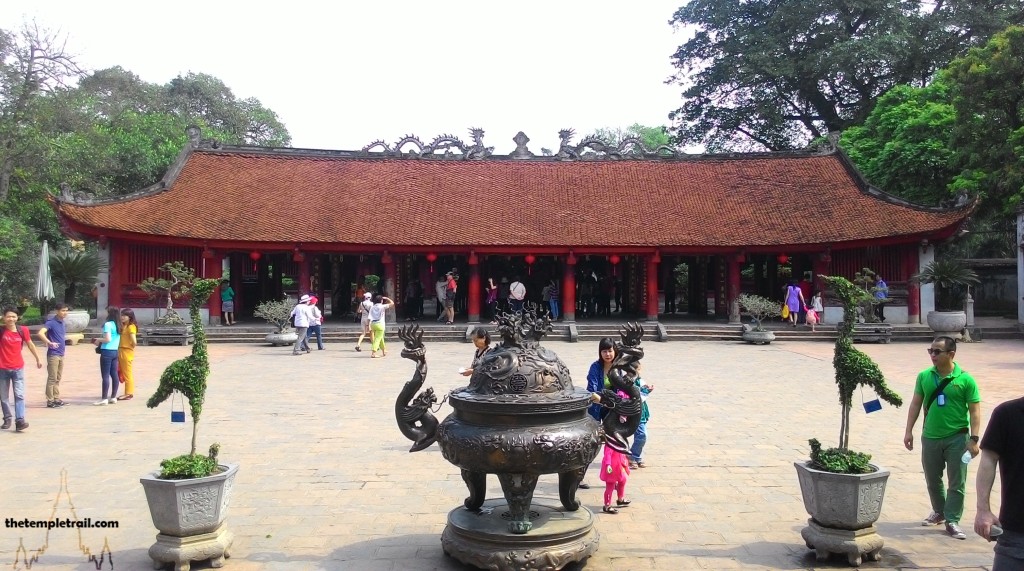
Exiting the Đại Bái Đường, you are in a small gap that separates it from the Thượng Điện (Dai Thanh sanctuary). This is the main shrine hall of the temple and in the centre you find Khổng Tử (Confucius) himself. The painted and lacquered statue depicts the Chinese philosopher as an elderly bearded man with fair skin. He is not as ugly as he is in native Chinese statues of him. The sage, who preached a return to the golden era of wise kings, the value of learning, respect of the rites and traditional hierarchy based on merit, looks out with a serenely from between bunches of devotional flowers. The lacquered statue made in 1729 is a work of Vietnamese artisanry that is echoed in the four companion statues of the hall. The sage is joined by Nhan Uyên (顏回 Yán Huí), Tăng Sâm (曾子 Zēngzǐ), Tử Tư (子思 Zǐsī), and Mạnh Tử (孟子 Mèng Zǐ). Collectively they are known as the Four Sages. Yán Huí was the favourite disciple of Confucius, Zēngzǐ wrote the Great Learning (one of the Four Books) and taught Confucius’ grandson Zǐsī, who wrote the Doctrine of the Mean (another of the Four Books). Mèngzǐ lived two hundred years after Confucius and wrote the Mencius (another of the Four Books). He is considered to be the second most important Confucian after Confucius himself.
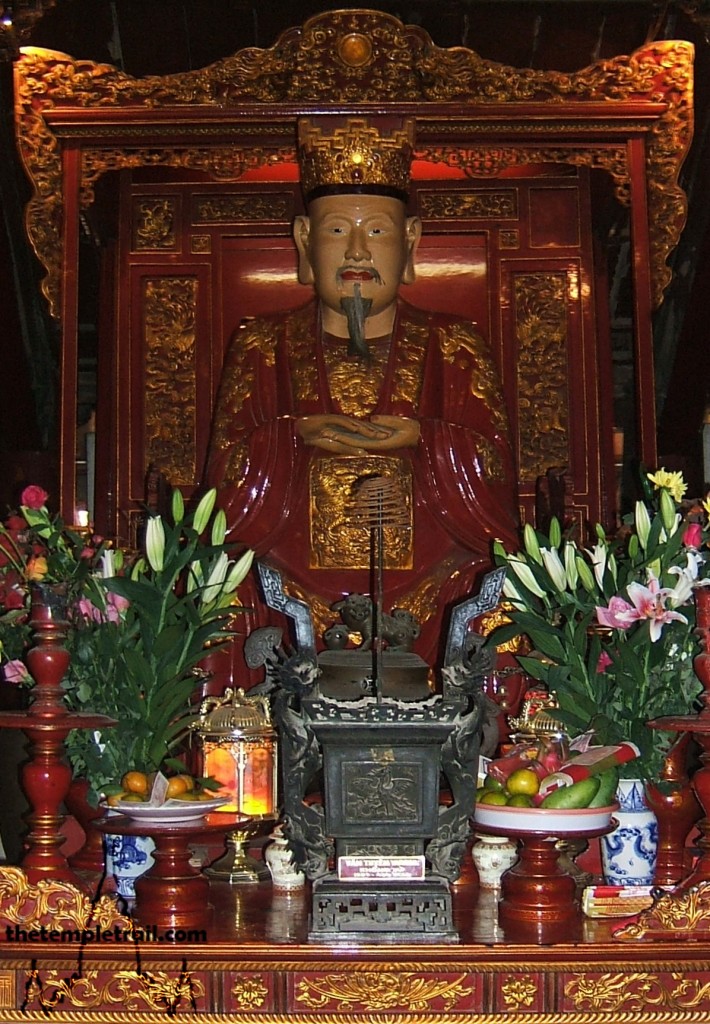
After some time with the men of learning, you head out through the Thái Học Môn (Thai Hoc Gate) and into the fifth courtyard. Also called the Thai Hoc Courtyard, it is the traditional home of the Quốc Tử Giám (Imperial Academy), known as the Thái Học Viện during the Lê dynasty (1428 – 1788 CE). This entire area you are surrounded by is a reconstruction from the year 2000, as the original was destroyed by the French in 1946. Their artillery tore down, among other buildings, the Đền Khải Thánh, a shrine built to honour the parents of Confucius Thúc Lương Ngột (叔梁紇 Shūliáng Hé) and Nhan Thị (顏徵在 Yán Zhēngzài). The shrine sat amidst the academy buildings that saw the educated echelons of Vietnamese society through their education for hundreds of years. While originally only for royals and nobles, in 1253, in the reign of King Trần Thái Tông, Quốc Tử Giám opened to commoners as well as the elite.
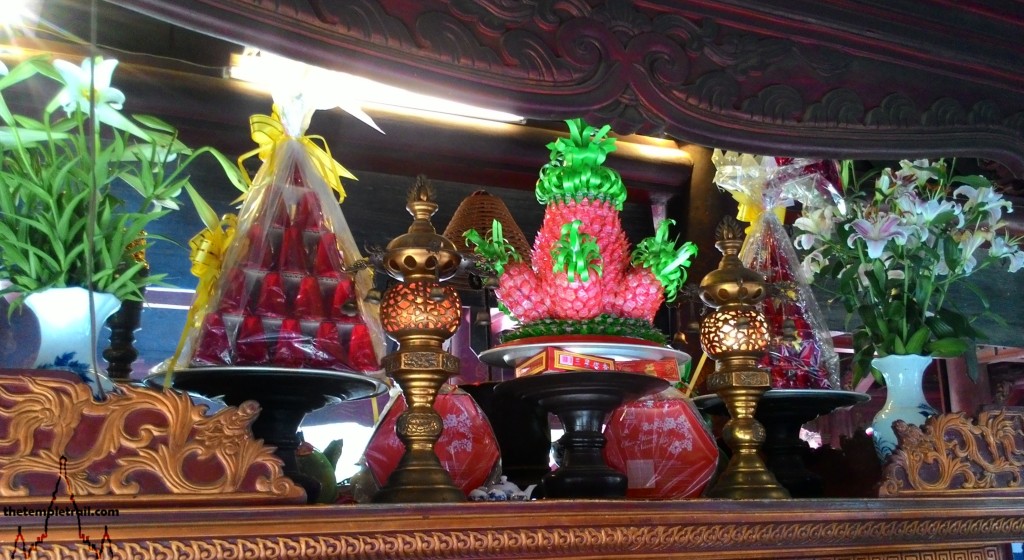
Being a Confucian academy, the main focus of study at Quốc Tử Giám was the Tứ Thư (Four Books) and Ngũ Kinh (Five Classics). The Four Books are the Đại Học (Dà Xué – Great Learning), Trung Dung (Zhōng Yóng – Doctrine of the Mean), Luận Ngữ (Lùn Yǔ – Analects) and the Mạnh Tử (Mèngzǐ – Mencius). Three were written by three of the Four Sages, but the Analects was collectively put together by the disciples of Confucius after his death to record his sayings. The Five Classics are pre-Confucian Chinese classics promoted by Confucius. These are the Kinh Thi (詩經 Shī Jīng – Classic of Poetry), Kinh Thư (書經 Shū Jīng – Book of Documents), Kinh Lễ (禮記 Lǐ Jì – Book of Rites), Kinh Dịch (易經 Yì Jīng or I Ching – Book of Changes) and the Kinh Xuân Thu (春秋 Chūn Qiū – Spring and Autumn Annals). The I Ching is the oldest of the Classics and could be up to three thousand years old.
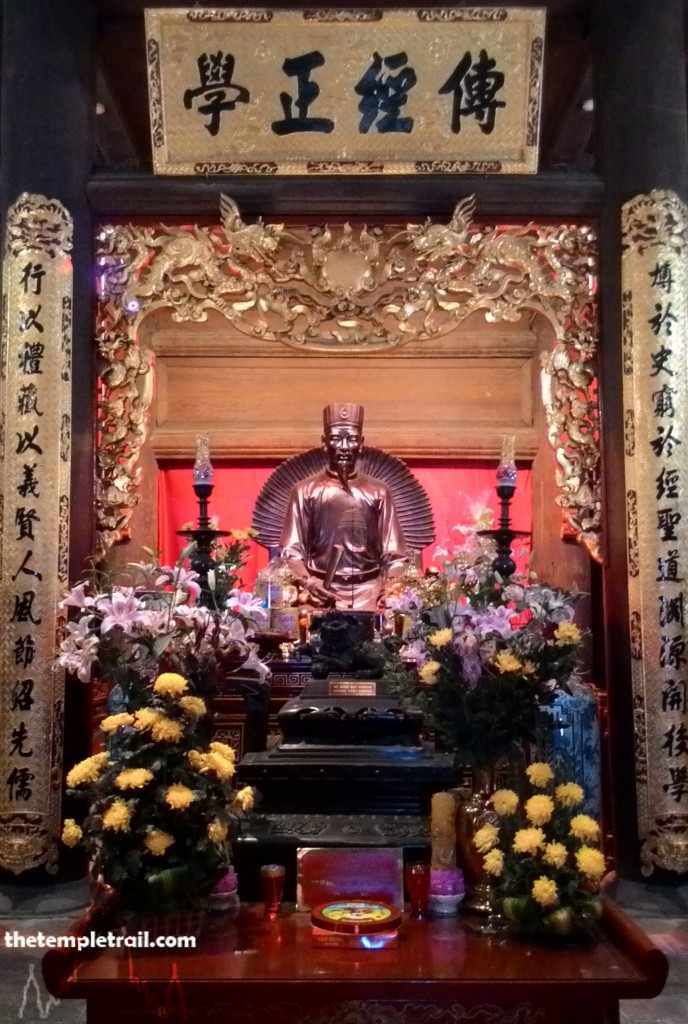
Returning to the present, you gaze over at the two new buildings across the court. They are homogenous with the rest of the temple and the architects and builders have done a good job of melding them with the older structures of Văn Miếu. Passing quickly through the Tiền Ðường (Front Hall), you see various exhibits and displays about Vietnamese achievements. You soon come to the Hậu Ðường (Rear Hall). This two storey structure is built to honour those who made the academy great. The chamber on the ground floor greets you with a statue of Chu Văn An, a famous rector of the academy and teacher of Emperor Trần Hiến Tông. Ascending to the upper floor, you find statues of the three most important emperors concerned with Văn Miếu and Quốc Tử Giám. Lý Thánh Tông founded the Temple of Literature in 1070, Lý Nhân Tông founded the Imperial Academy in 1076 and Lê Thánh Tông erected the doctorate stelae in 1484. Rightly honoured in the highest chamber of the complex, these three men had a profound influence over Vietnam and its values of education.
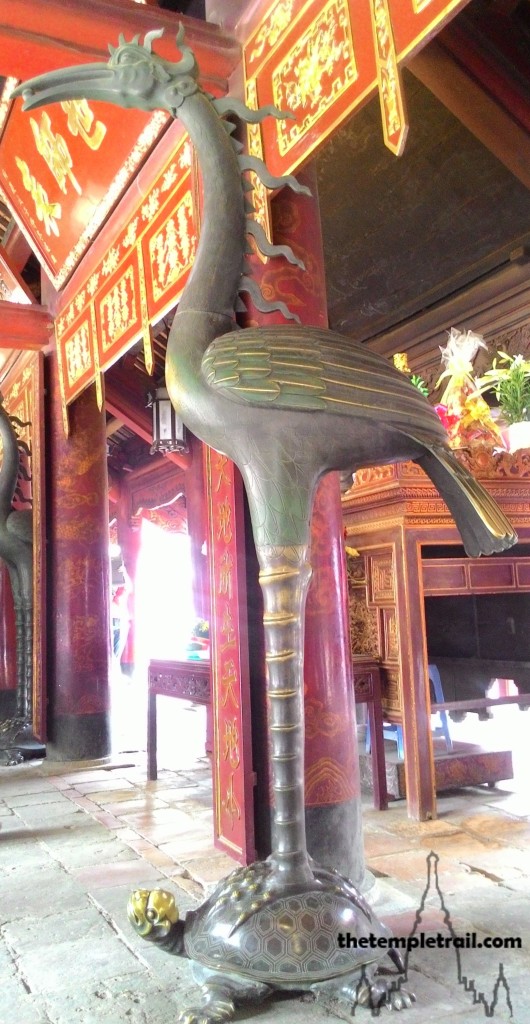
Leaving the buildings, you glance briefly at the drum and bell at the back of the complex. These enormous instruments show the high esteem that is held for the temple and academy by the people and government of Vietnam. As you stroll back through Quốc Tử Giám and Văn Miếu, you reflect upon the simple majesty of the Temple of Literature and its grounds. The history of the temple and academy is still profoundly present in Hanoi. The emphasis placed on education today is stronger even than during the active years of the academy. In modern Vietnam education can open more doors than just those at the Temple of Literature. Without Văn Miếu and Quốc Tử Giám, the story might be different. The temple and its academic counterpart have emblazoned themselves on the national psyche and laid the road for thousands of students to walk down.
I would like to give a huge heartfelt thank you to my close friend and proud Hanoian Hieu Trung Tran. Most of the photographs featured in this article are his.
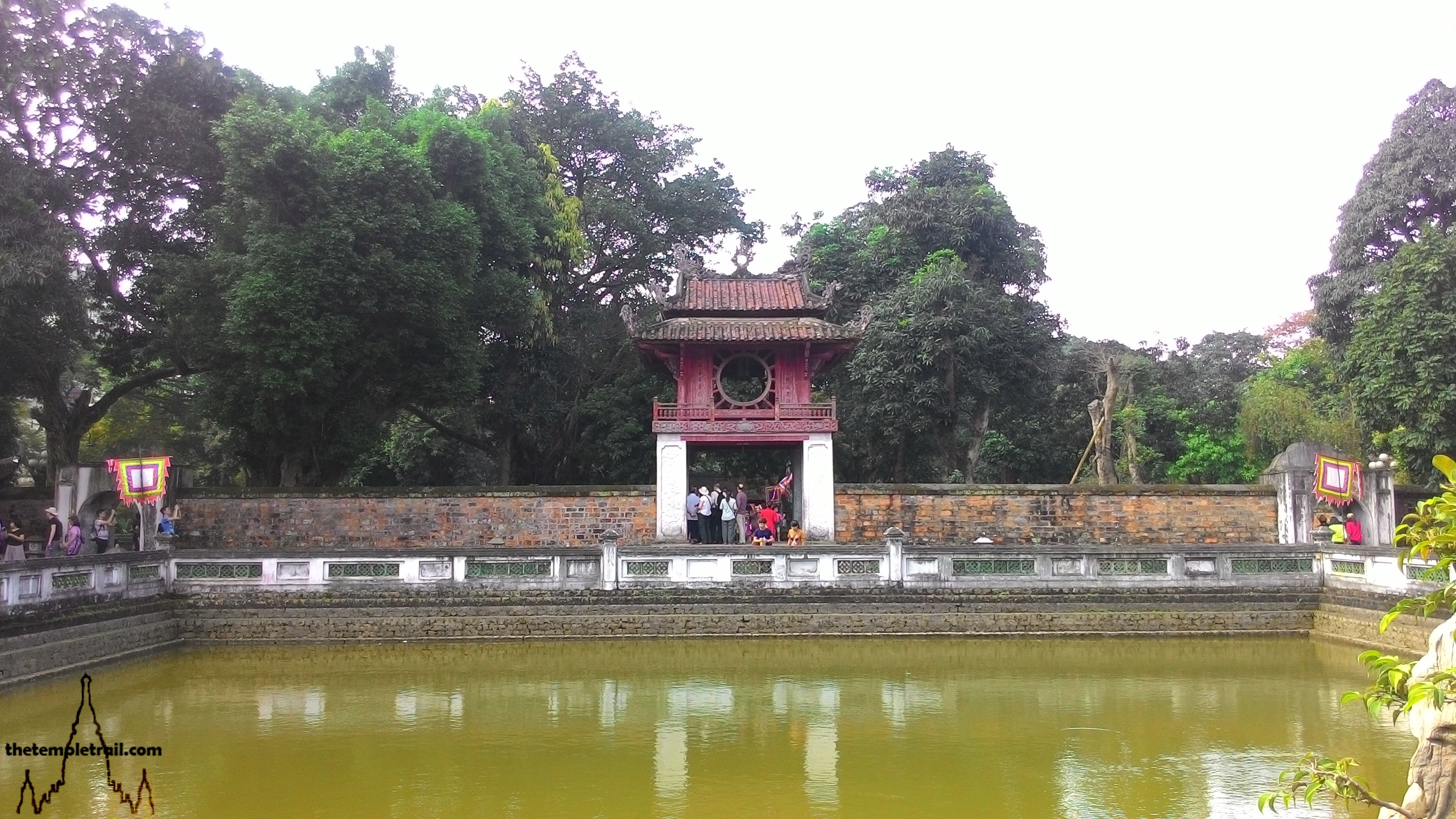
 Chinese Gods 101
Chinese Gods 101